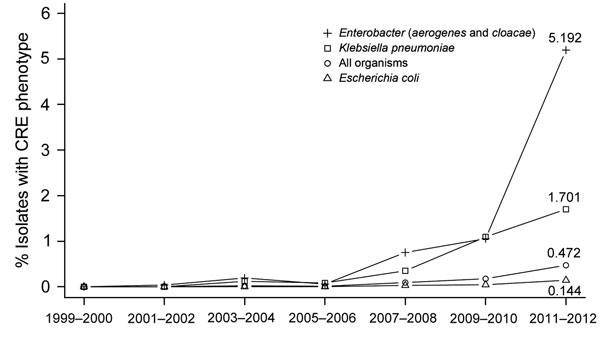Volume 21, Number 11—November 2015
Research
Carbapenem-Resistant Enterobacteriaceae in Children, United States, 1999–2012
Figure 1

Figure 1. National trends in prevalence of carbapenem-resistant Enterobacteriaceae (CRE) isolates from children, The Surveillance Network−USA database, 1999–2012. Markers show the percentage of isolates that belonged to the resistance phenotype for each 2-year period. Data for patients <1 year of age were not available for all years and were excluded from this analysis. The All Organisms trend encompasses Escherichia coli, Klebsiella pneumoniae, Proteus mirabilis, Enterobacter cloacae, E. aerogenes, Citrobacter freundii, C. koseri, and Serratia marcescens. Each trend had a significant positive quadratic term: All Organisms (p = 1.3 × 10−40), E. aerogenes and E. cloacae (p = 1.4 × 10−29), K. pneumoniae (p = 6.6 × 10−11), and E. coli (p = 2.4 × 10−11). Trends for C. freundii and C. koseri, S. marcescens, and P. mirabilis are not shown but they all had significant positive quadratic terms (p = 0.0006; p = 0.002; and p = 1.0 × 10−7).